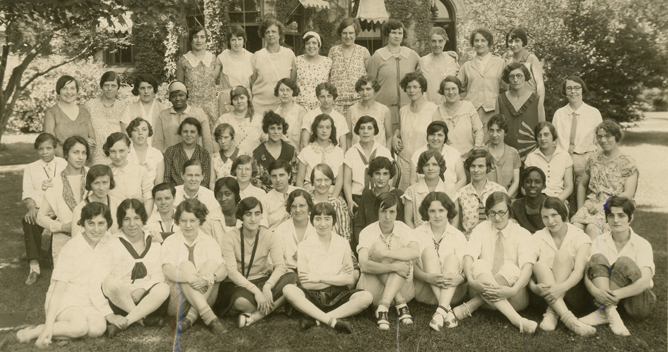Mapping the History of Women in Higher Education
Speaker Bio
Jennifer Berdan is a doctoral student in the Higher Education and Organizational Change program at UCLA and is also earning a graduate certificate in Digital Humanities from UCLA's Center for Digital Humanities. She currently works as an analyst for the Cooperative Institutional Research Program at UCLA's Higher Education Research Institute and as a research assistant for multiple reports commissioned by the Women's College Coalition using student and faculty survey data. Her research focuses are on gender, faculty, technology and organizational change in higher education.
Zoe Borovsky, Ph.D., co-author, is the Librarian for Digital Research and Scholarship and leads the Research Commons located in UCLA’s Charles E. Young Research Library. She is also an Adjunct Assistant Professor with the Scandinavian Department at UCLA and an affiliated faculty member of the Digital Humanities program at UCLA.
Abstract
The geo-temporal mapping project reported in this paper maps the history of women in higher education in the United States. This mapping visualization tool allows researchers to study the history of women in higher education from a broader perspective, seeing when and where single-sex and coeducational institutions exist in time and space over the last two centuries. The goals and purpose of this geo-temporal map and the decision-making process for creating such a tool are presented including uses for research and teaching, and choices around technology, content, and information sources. To show the presence (or absence) of women in higher education, we chose to map institutions, identifying their enrollment status as women's only, men's only or coeducational. Using historical institutional information and records, we indicate temporal changes such as institutions opening or closing, or moving from single-sex to coeducational. And by using Google Earth as the interface, users have control over the timeframe and focus of geographical region(s), customizing the tool to their needs. As a result of this map, we are able to detect geographical patterns of women's colleges and coeducational institutions, simultaneously seeing changes in these patterns over time.
Mapping the History of Women in Higher Education
The geo-temporal mapping project reported in this paper maps the history of women in higher education in the United States. This mapping visualization tool allows researchers to study the history of women in higher education from a broader perspective, seeing when and where single-sex and coeducational institutions exist in time and space over the last two centuries. The goals and purpose of this geo-temporal map and the decision-making process for creating such a tool are presented including uses for research and teaching, and choices around technology, content, and information sources. To show the presence (or absence) of women in higher education, we chose to map institutions, identifying their enrollment status as women's only, men's only or coeducational. Using historical institutional information and records, we indicate temporal changes such as institutions opening or closing, or moving from single-sex to coeducational. And by using Google Earth as the interface, users have control over the timeframe and focus of geographical region(s), customizing the tool to their needs. As a result of this map, we are able to detect geographical patterns of women's colleges and coeducational institutions, simultaneously seeing changes in these patterns over time.
